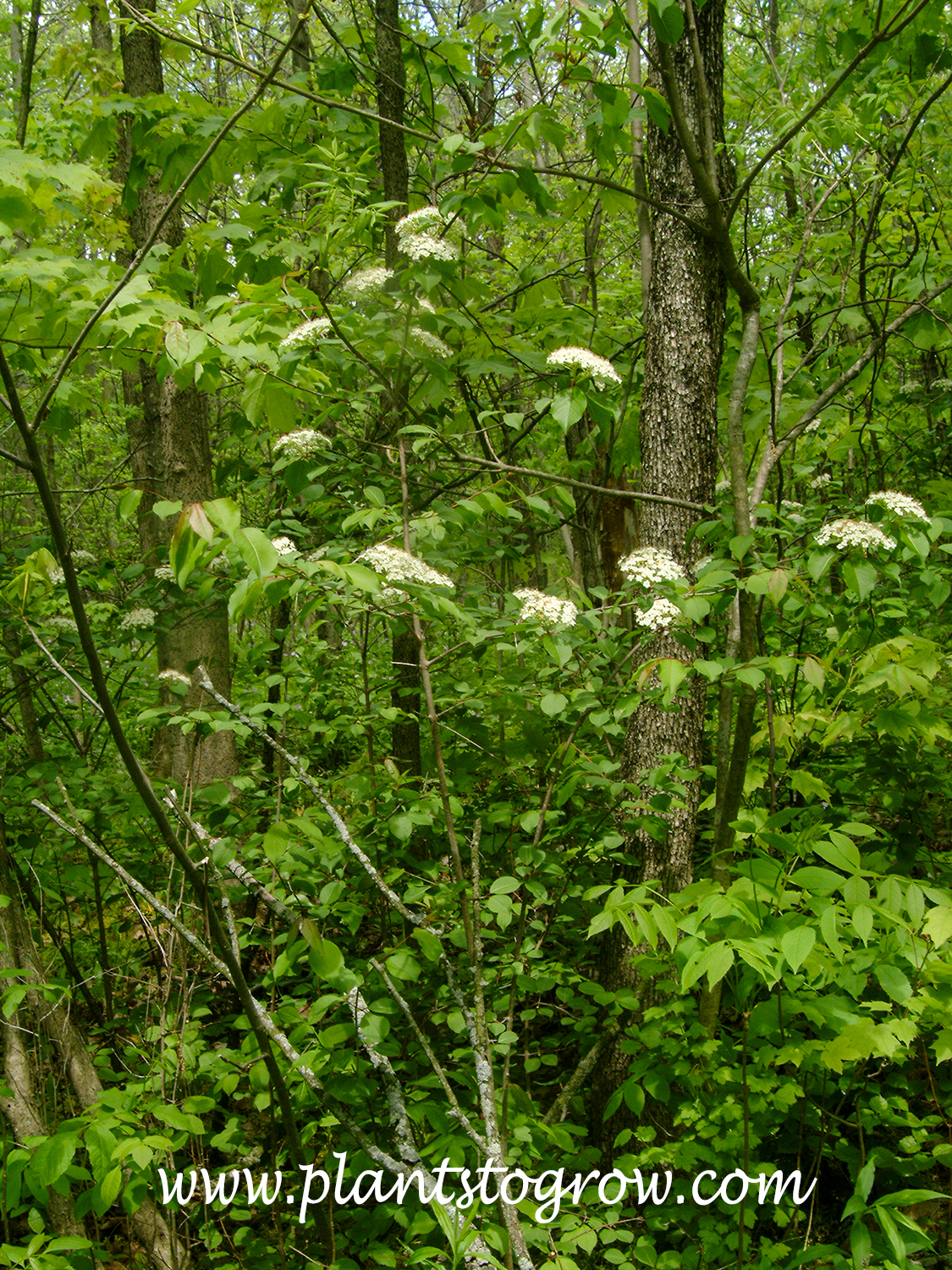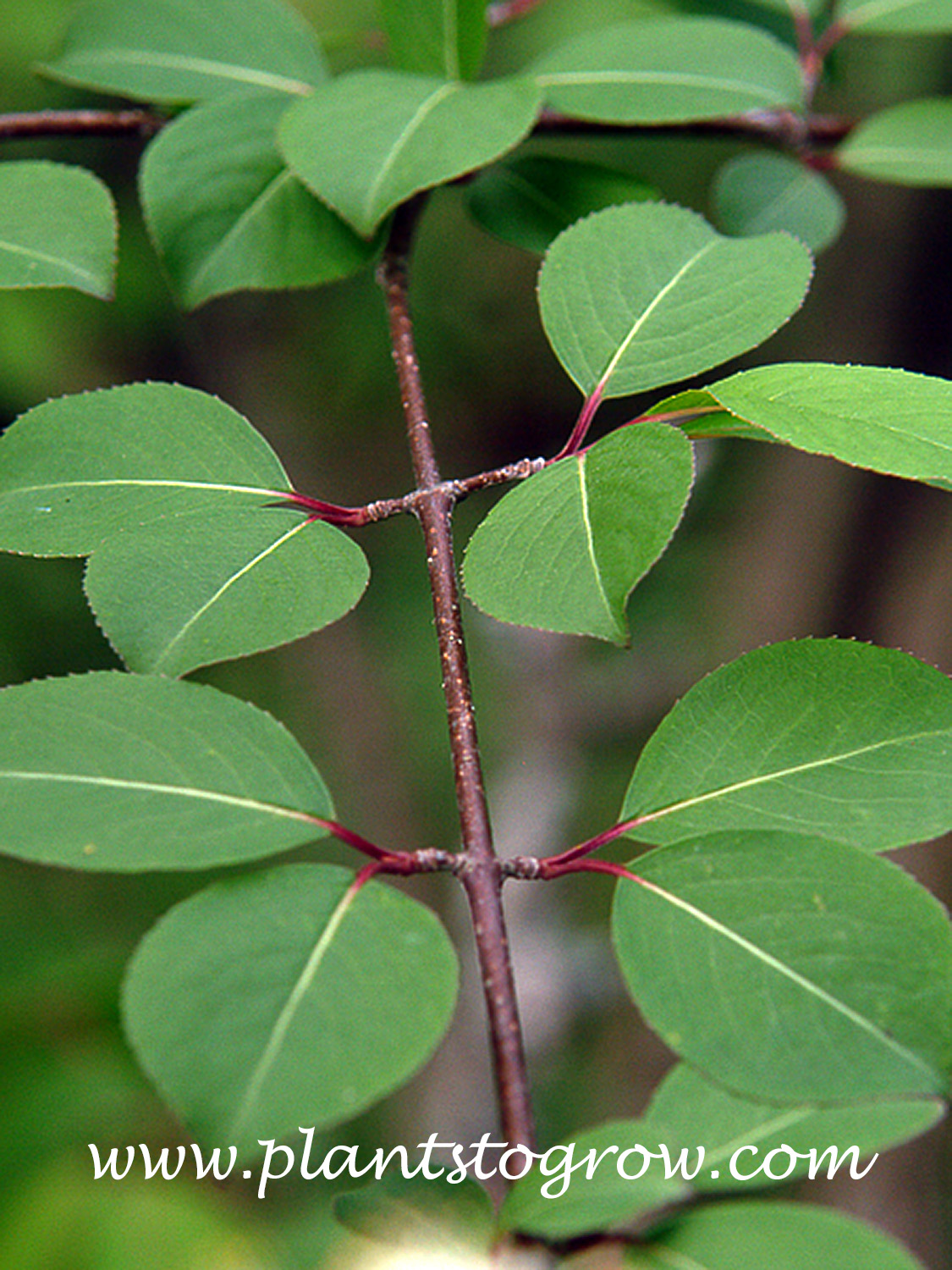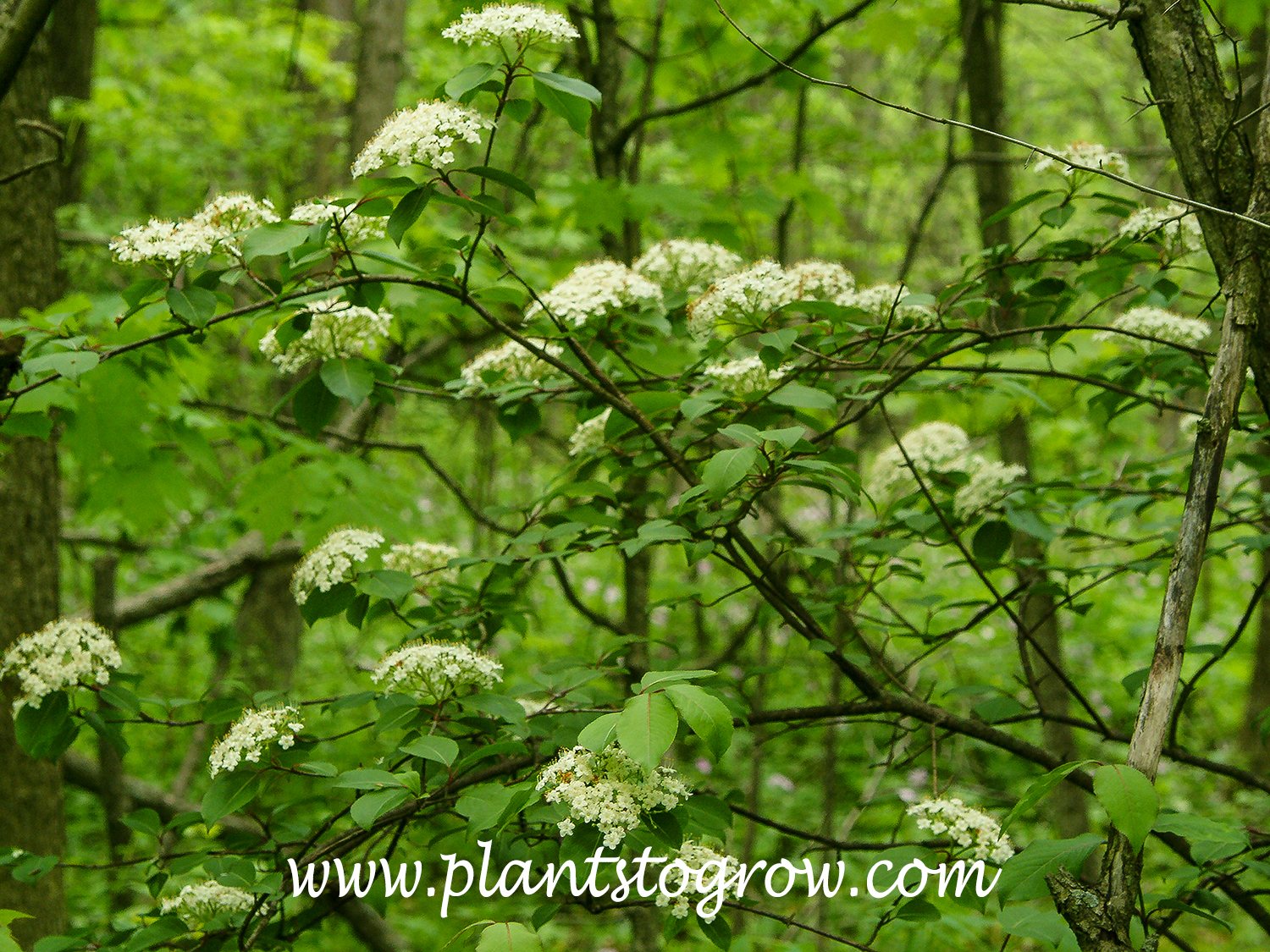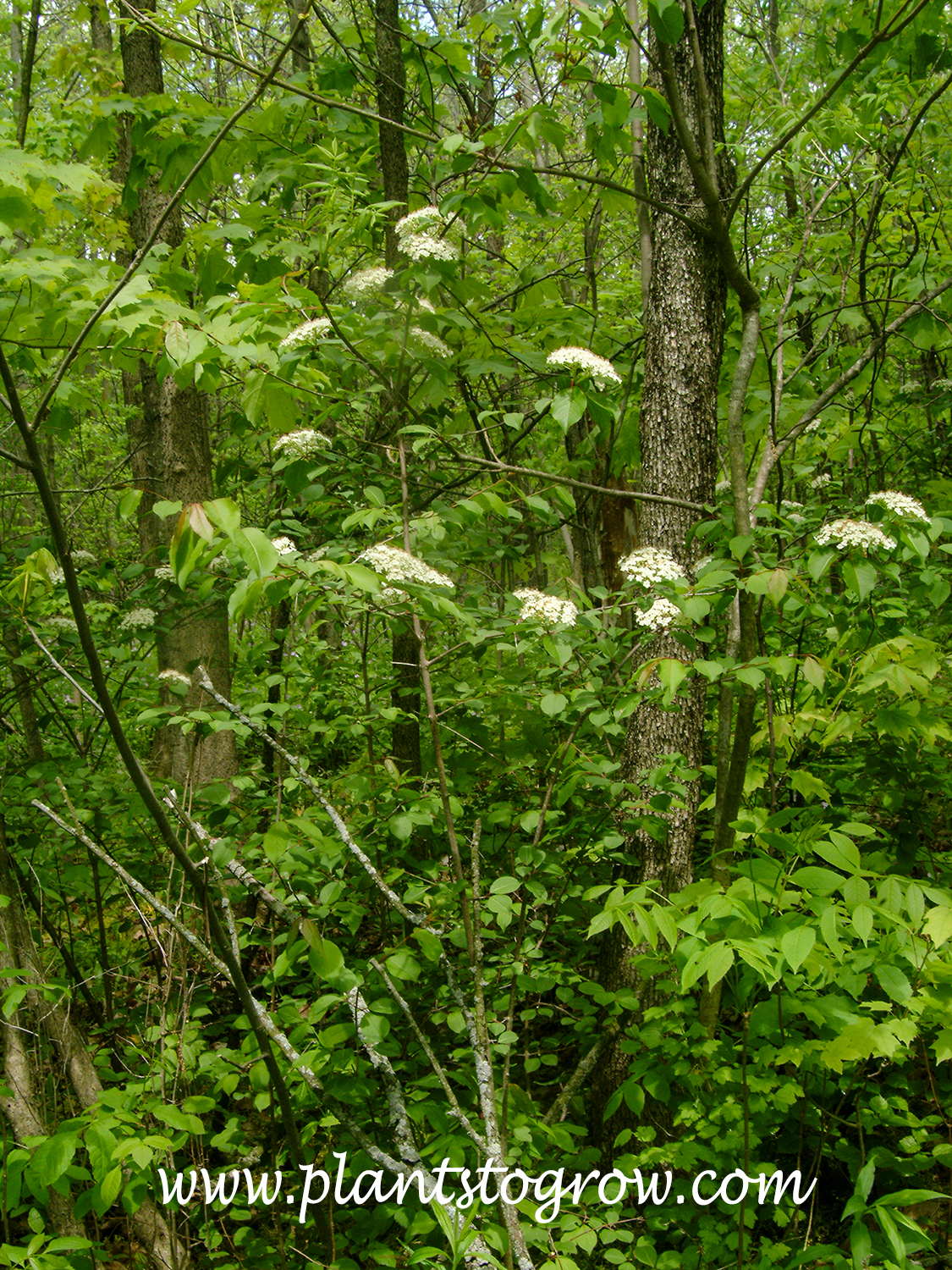| Description | Blackhaw Viburnum (Viburnum prunifolium) is a large deciduous shrub with many seasons of interest, including white flowers, fall colors, and ornamental berries eaten by humans and wildlife. It makes an excellent large landscape. |
|---|---|
| Pronunciation | (vie-BER-num)(prune-ni-FO-li-um) |
| Plant Type | All Plants, Shrubs Deciduous |
| Hardiness Zone | 3-9 |
| Sunlight | full sun to full shade but fall colors and flower production is best in full sun. |
| Moisture | prefers moist but very adaptable |
| Soil & Site | prefers well drained, moist soils but very adaptable to soil types and ph. |
| Flowers | 2.5", creamy-white, flat-topped inflorescences blooming in May |
| Fruit | oval drupes, green ripening to blue-black to blue pink, produced in large amounts and attract birds, fruit is edible |
| Leaves | medium to dark green, lustrous, elliptical, sparsely to finely serrated, has a smooth-margined, winged petiole, fall color is variable ranging from dark green to red, purple or burgundy, more pronounced in full sun |
| Dimensions | A twiggy dense shrub, single to multiple stemmed reaching 15 feet by a spread of 10 feet. |
| Propagation | seeds, cuttings and division of the suckers |
| Native Site | A native as an understory shrub in the Eastern and Midwestern United States. |
| Misc Facts | The name Blackhaw refers to the black bark and haw for the plants resemblance to a Hawthorn tree. A native as an understory shrub in the Eastern and Midwestern United States. |
| Author's Notes | I have only seen this plant once in natural area. It was growing in heavy shade. As can be expected the production of flowers and fruit was low. |
| Notes & Reference | #01-Manual of Woody Landscape Plants (Michael Dirr) ,#106-Viburnums (Michael Dirr), ##214-Classic Viburnums (www.classicviburnums.com) |

Cart






